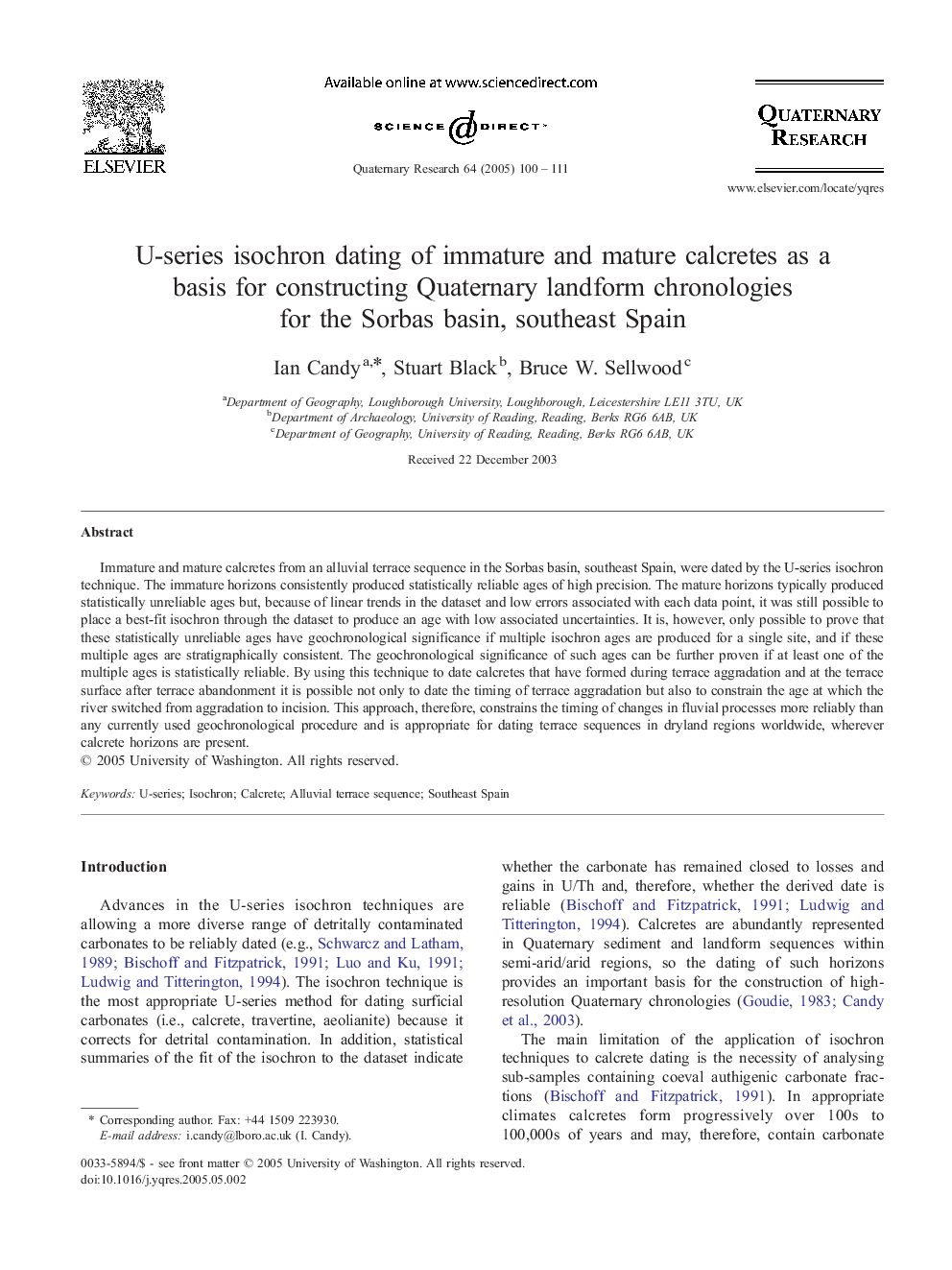| Article ID | Journal | Published Year | Pages | File Type |
|---|---|---|---|---|
| 10501318 | Quaternary Research | 2005 | 12 Pages |
Abstract
Immature and mature calcretes from an alluvial terrace sequence in the Sorbas basin, southeast Spain, were dated by the U-series isochron technique. The immature horizons consistently produced statistically reliable ages of high precision. The mature horizons typically produced statistically unreliable ages but, because of linear trends in the dataset and low errors associated with each data point, it was still possible to place a best-fit isochron through the dataset to produce an age with low associated uncertainties. It is, however, only possible to prove that these statistically unreliable ages have geochronological significance if multiple isochron ages are produced for a single site, and if these multiple ages are stratigraphically consistent. The geochronological significance of such ages can be further proven if at least one of the multiple ages is statistically reliable. By using this technique to date calcretes that have formed during terrace aggradation and at the terrace surface after terrace abandonment it is possible not only to date the timing of terrace aggradation but also to constrain the age at which the river switched from aggradation to incision. This approach, therefore, constrains the timing of changes in fluvial processes more reliably than any currently used geochronological procedure and is appropriate for dating terrace sequences in dryland regions worldwide, wherever calcrete horizons are present.
Related Topics
Physical Sciences and Engineering
Earth and Planetary Sciences
Geology
Authors
Ian Candy, Stuart Black, Bruce W. Sellwood,
